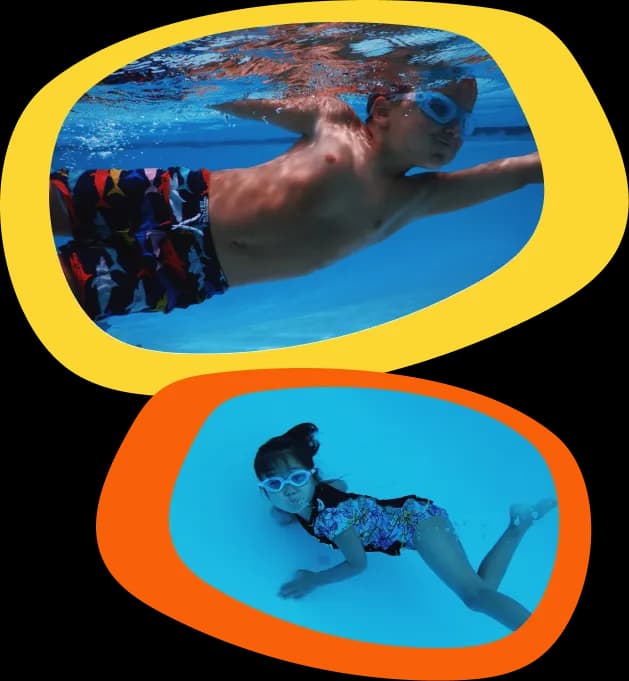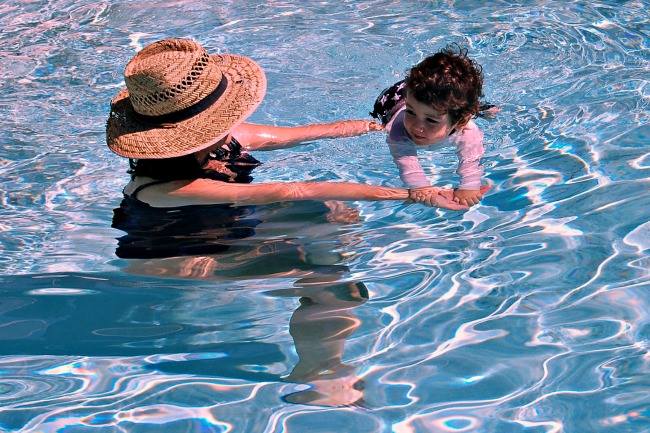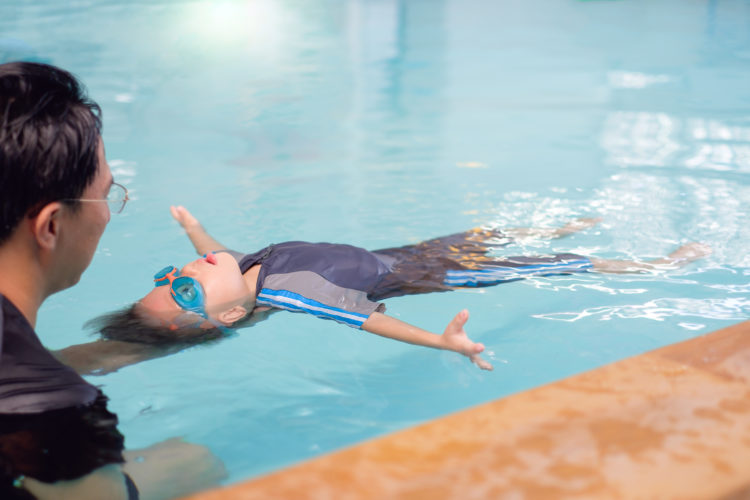Beginner Swim - How To Float Front And Back

Written by Sunsational — 5 min read

Obviously, before anyone can learn to swim, they must be able to float in the water comfortably. And before anyone can learn to prone float, they must be comfortable and able to submerge their face underwater without discomfort and anxiety. Floating on one’s back requires the willingness and ability to at least submerge ones ears into the water in order to maintain a level position. Otherwise, one is like a “see-saw” with one end up above the water. When the head is in the air, instead of the water, it weighs more than when submerged negating the natural buoyancy of the water.
Practice Out of the Water First
The first drill is to have these beginners practice on the pool deck. Simply have them lie flat on both front and back so they understand that all their body parts need to be in proper horizontal alignment with particular emphasis on head position. A variation, or second drill, would be to have them do the same horizontal alignment while perpendicular to the pool itself. This will allow them to be on the pool deck from shoulders down to their feet but with the head positioned over the water itself. This will provide added emphasis that their head has to down completely flat and not held up away from the water. Do this same drill for prone and back floating.
One Leg in First
A second drill is also done mainly on the pool deck as follows: Have the student lie parallel to the pool but with one leg over the water. The purpose of this is to start to teach them the important technique of how to stand up again from a floating position. After attaining the proper positioning (may require some “spotting support” from the instructor so one side of the body remains on the pool deck without falling into the water. Once balanced, have the student deliberately let the leg that is over the water begin to sink while pressing with one arm onto the pool deck and lifting the head simultaneously. Tell them that once they are floating in the water, with or without spotting support, you will help them drill on this skill again.
Prone Float
The third drill is done completely in the water with them floating while you spot and support by holding underneath their forearms. For a back float, spot and support underneath the shoulder blades or upper arms. When they are ready, progressively lighten up on your support. For a prone float, you may support just the fingers and a back float just under the head itself. The final step would be to go from this very light support and touch to removing all support once they are comfortable and really floating on their own even though you may have provided a tiny touch support when first having them in this position. Don’ t forget to make sure they know how and are comfortable returning to the standing position.
Be advised that spotting and support can also be done by them first holding and then just lightly touching the pool wall, mostly the pool gutters or steps.
Once they can hold these floating positions properly for a full 5-10 seconds, they are ready to learn the propulsion skills of kicking and stroking.
About the author: Jeff Lichter is a Sunsational Swim Instructor from Surprise, Arizona
Jeff has ten years experience as a Swim Instructor in a public Junior High School plus one year in a High School. He has over ten years experience as a competitive swim coach. Book Jeff, or any other Sunsational Swim Instructor in your area today!
Share on socials




